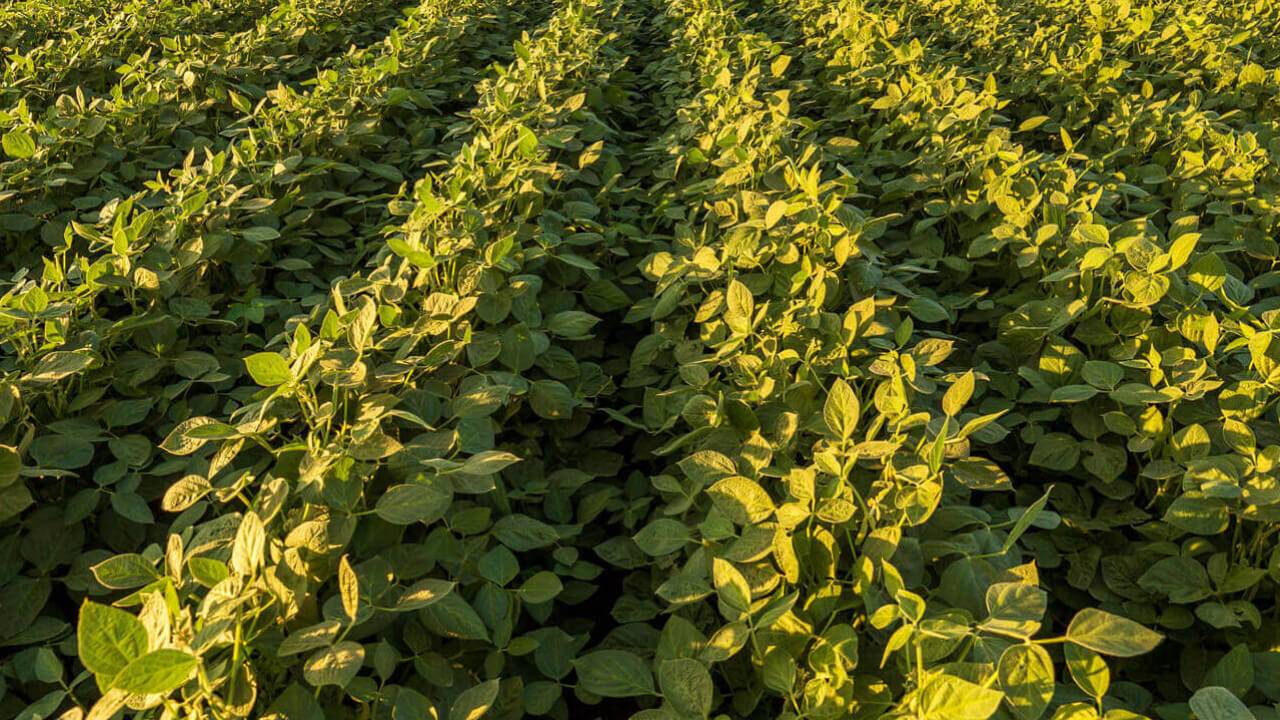Iron deficiency chlorosis (IDC) is a disorder that appears in soybeans during the early stages of the growing season. IDC can reduce yield and lead to stunting if it goes unaddressed year to year. Every year, farmers lose over $100 million to IDC and yield loss estimates range from 20-30% in severe cases.

What to Look For
Iron is an essential nutrient that supports key plant functions including nodulation, energy transfer and plant metabolism. Iron deficiency can reduce the absorption of other essential nutrients including nitrogen. Deficiency in iron prevents chlorophyll from forming which leads to the yellowing of leaves.
In soybeans with IDC, the youngest leaves will begin to turn yellow or white while the veins remain green. Unlike mobile nutrients such as nitrogen or potassium, iron is immobile within the plant. As a result, yellowing and signs of IDC will only be seen on newer growth. Beyond yellowing, severe cases of IDC can cause leaves to turn brown.
Causes and Implications
Upon testing, soils may have abundant levels of iron, but must be in a usable form. Wet soils, salty soils and soils with high pH (greater than 7.5) will cause IDC to occur as these factors prevent iron absorption. Calcareous or chalky soils are also favorable conditions for IDC.
IDC occurs most often in shallow areas that are wet where salts and carbonates have built-up overtime. Under these conditions, calcium particles bind to the soil, making the iron inaccessible to soybeans. Calcium carbonate neutralize acid in roots that is needed to make usable iron. For this reason, soils containing limestone with carbonate levels higher than 5% can make iron insoluble.
High nitrates can worsen IDC since absorbing nitrogen decreases the amount of usable iron. Fields with over 100 pounds of nitrogen per acre can be problematic for soybeans and lead to IDC.
Treatment
IDC cannot be managed in-season. We recommend selected a portfolio of defensive varieties to fight this in your fields. Check our line of Ironclad™ soybeans. Our Ironclad brand has been designed to fight this disorder.
Reducing stress levels for soybeans is critical for preventing IDC or worsening its impacts. Other factors including compaction, over-tillage and herbicide injuries can make soybeans more susceptible to chlorosis or lower their chances of overcoming the deficiency.
Soybean varieties that are resilient to IDC should be planted, especially if a field has produced soybeans with chlorosis in the past. In addition to selecting the right varieties, planting iron-coated seeds can be a way to combat the onset of IDC. In-furrow application of iron chelate fertilizer can also address IDC.
Rotational planting or companion cropping with oats are also solutions for preventing IDC. Intercropping soybeans with oats and wheat can reduce levels of soil nitrates that would otherwise lead to chlorosis. Contact your local Latham Representative to determine a treatment plan that meets your specific needs.
